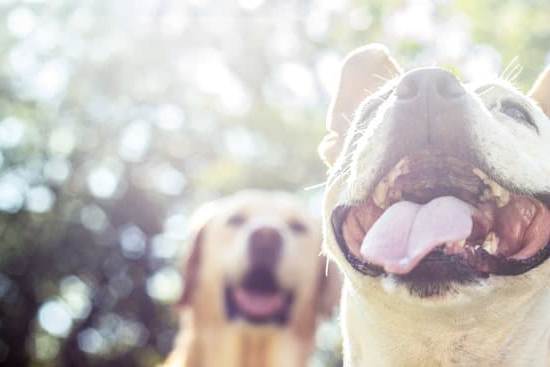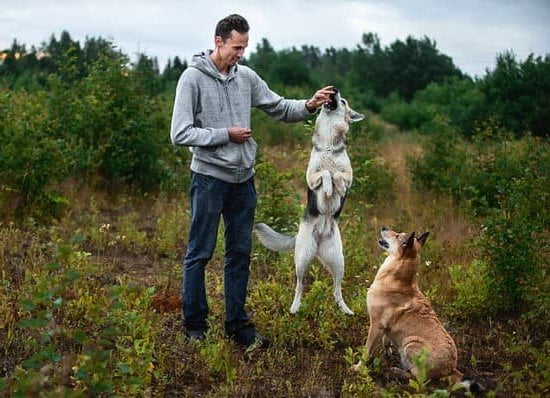The process of house training a dog can vary depending on several factors, including the breed, age, and individual personality of the dog.
In this article, we will delve into the different aspects of the house training process, including factors that affect the time it takes to train a dog, different methods for house training, setting realistic expectations, tips for speeding up the process, common mistakes to avoid, dealing with setbacks and accidents, and signs that your dog is fully house trained.
The time it takes to house train a dog can vary from a few weeks to several months. Factors such as breed, age, temperament, and previous living conditions can all play a role in how quickly a dog becomes reliably house trained.
It’s important for dog owners to be patient and understand that each pup is unique in its learning process. By understanding these factors and being prepared for potential challenges along the way, owners can set themselves up for success in achieving a fully house trained pup.
In the following sections of this article, we will explore different methods for house training dogs and provide tips for speeding up the process. We will also discuss common mistakes that owners make when house training their dogs and offer guidance on how to deal with setbacks and accidents during the process. Ultimately, successful house training requires patience and consistency from the owner – but with dedication and understanding, it is achievable.
Factors That Affect the Time It Takes to House Train a Dog
Age of the Dog
The age of the dog plays a significant role in how long it takes to house train them. Puppies, for instance, have smaller bladders and may not yet have developed bowel or bladder control, making it more challenging to house train them. Older dogs, on the other hand, may already have established bathroom habits that need to be unlearned before they can be successfully house trained.
Breed of the Dog
Different breeds have different temperaments and energy levels, which can affect their ability to grasp house training quickly. Some breeds are known for being more independent and stubborn, making them more resistant to house training. Understanding your dog’s breed tendencies can help you tailor your approach to their specific needs.
Consistency in Training
Consistency in training is key when it comes to house training a dog. If the rules and routines are constantly changing, it can confuse the dog and prolong the house training process. Consistently reinforcing good behavior and providing regular bathroom breaks will help establish a routine that your dog can quickly adapt to.
Understanding these factors can help pet owners set realistic expectations when embarking on the house training process with their furry companions. By taking into account variables such as age, breed, and consistency in training, pet owners can better prepare themselves for the time and effort required to successfully house train their dogs.
Different Methods for House Training a Dog
House training a dog is an essential part of being a responsible pet owner. There are several methods that can be used to accomplish this. Each method has its pros and cons, and it’s important to choose the one that best suits your lifestyle and your dog’s individual needs.
Here Are Some Different Methods for House Training a Dog
- Crate training: This method involves confining your dog in a crate when you are unable to directly supervise them. Dogs have a natural instinct not to soil their den, so they are less likely to have accidents in their crate.
- Paper or puppy pad training: This method involves teaching your dog to eliminate on a specific surface, such as newspaper or puppy pads. This can be useful for owners who live in apartments or have limited outdoor access.
- Bell training: Bell training teaches the dog to ring a bell when they need to go outside. This method can be effective for dogs who struggle with other forms of communication.
It’s important to remember that every dog is different, and what works for one may not work for another. Consistency, patience, and positive reinforcement are key components of any successful house training method. It’s also crucial to monitor your dog’s behavior and adjust your approach as needed.
Choosing the right method for house training your dog is an important decision that can impact both you and your pet’s quality of life. By understanding the various methods available, you can make an informed choice based on your own circumstances and set yourself up for success in the house training process.
Setting Realistic Expectations for the House Training Process
When it comes to house training a dog, it’s important for pet owners to set realistic expectations for the process. While some dogs may quickly grasp the concept of potty training, others may take longer to fully understand and adhere to the rules of the house. It’s crucial for dog owners to understand that each dog is different, and the time it takes for them to be house trained can vary.
Understanding Your Dog’s Breed
One factor that can impact the length of time it takes to house train a dog is their breed. Certain breeds are known for being more stubborn or independent, making the training process more challenging. Understanding your dog’s breed characteristics can help you set realistic expectations and tailor your approach to their specific needs.
Age of Your Dog
Another factor to consider when setting expectations for house training is the age of your dog. Puppies typically have smaller bladders and may need more frequent bathroom breaks compared to adult dogs. This means that the house training process may take longer for younger dogs as they develop bladder control and learn to hold their urine for longer periods.
Consistency Is Key
Regardless of your dog’s breed or age, setting realistic expectations also involves understanding that consistency is key in the house training process. It’s important for pet owners to establish a routine, provide positive reinforcement, and remain patient throughout the process. By being consistent in your approach, you can help speed up the house training process while also ensuring that your dog understands and follows the rules of the house.
Tips for Speeding Up the House Training Process
House training a dog can be a challenging and time-consuming process, but there are several tips and strategies that can help speed up the process and make it more effective. Here are some helpful tips for speeding up the house training process:
- Establish a routine: Consistency is key when it comes to house training a dog. Establishing a regular feeding schedule and taking your dog outside at the same times each day can help them learn to control their bladder and bowels.
- Use positive reinforcement: When your dog successfully goes to the bathroom outside, be sure to reward them with praise, treats, or affection. This positive reinforcement will encourage them to continue going outside instead of indoors.
- Supervise closely: Keep a close eye on your dog while they are indoors, especially during the early stages of house training. This will allow you to catch any accidents in the act and quickly redirect them outside.
In addition to these tips, it’s important to remain patient and consistent throughout the house training process. Remember that every dog is different, and some may take longer to learn than others. By following these tips and staying dedicated to the process, you can help your dog become fully house trained in a timely manner.
Common Mistakes to Avoid When House Training a Dog
House training a dog can be a challenging process, and there are several common mistakes that owners should avoid in order to make the process smoother and more successful. One of the most common mistakes is not being consistent with the training.
Dogs thrive on routine, so it’s important to take them outside at the same times every day and praise them when they eliminate outdoors. Inconsistency can lead to confusion for the dog and ultimately prolong the house training process.
Another mistake to avoid is punishing your dog for accidents in the house. Punishment can cause anxiety and fear in dogs, making it even more difficult for them to understand what is expected of them during the house training process. Instead of punishment, focus on positive reinforcement when your dog eliminates outside, using treats or praise to encourage good behavior.
Lastly, some owners make the mistake of not supervising their dog closely enough during the house training process. It’s important to keep a close eye on your dog, especially in the early stages of house training, so that you can quickly guide them outside if they show signs of needing to go. Lack of supervision can lead to accidents indoors and set back the progress that has been made.
Avoiding these common mistakes can help make the house training process smoother and more successful for both you and your dog.
| Common Mistakes | Effect |
|---|---|
| Inconsistency with Training | Prolongs house training process |
| Punishing for Accidents | Causes anxiety and fear |
| Lack of Supervision | Leads to indoor accidents |
Dealing With Setbacks and Accidents During the House Training Process
If your dog has an accident in the house, it’s essential to clean it up thoroughly using an enzymatic cleaner specifically designed for pet odors. Dogs have a strong sense of smell, and if they can still detect their scent in a particular area, they are more likely to have another accident there.
It’s also crucial to supervise your dog closely, especially in the early stages of house training, so you can catch any signs that they need to go outside before they have an accident.
Another common setback during house training is when a dog who seemed to be making progress suddenly starts having accidents again. This could be due to various reasons such as changes in routine, new stressors, or medical issues.
If this happens, it’s vital to address any potential underlying reasons and reinforce positive behaviors through reassurance and treats when your dog does go outside. Remember that setbacks are normal, and with patience and consistency, you will get back on track with your house training efforts.
Celebrating Success
After going through the challenging process of house training your dog, it is important to recognize the signs that indicate that your furry friend is fully house trained. One clear sign is when your dog consistently waits until they are outside to relieve themselves, without any accidents inside the house. This shows that they have developed good bladder and bowel control, as well as an understanding of where it is appropriate to go potty.
Another key indicator of a fully house trained dog is when they no longer show any destructive behavior, such as chewing or digging indoors. Dogs may engage in these behaviors when they are feeling anxious or stressed about their environment, but as they become more comfortable and secure in their surroundings, these actions should diminish.
Additionally, an important sign that your dog has been successfully house trained is when they can be left alone in the house for extended periods of time without having any accidents or exhibiting any destructive behavior. This demonstrates that your dog has gained confidence and independence, as well as trust in being left unsupervised.
Overall, recognizing these signs of successful house training in your dog is a cause for celebration and a testament to your hard work and consistency throughout the training process.
| Signs of Successful House Training | Explanation |
|---|---|
| Consistently waiting until outside to relieve themselves | Shows good bladder and bowel control and understanding of appropriate potty locations. |
| Decreased destructive behavior indoors | Indicates decreased anxiety and increased comfort in their environment. |
| Ability to be left alone without accidents | Demonstrates confidence, independence, and trustworthiness. |
Conclusion
In conclusion, house training a dog can be a challenging process, but with patience and consistency, it can be successfully achieved. Understanding the factors that affect the time it takes to house train a dog, as well as the different methods available, is crucial for setting realistic expectations. It’s important for dog owners to remember that each dog is unique and may require different approaches to house training.
Setting realistic expectations for the house training process is essential. While some dogs may pick up on the routine quickly, others may take longer to fully grasp the concept. It’s important for dog owners to remain patient and consistent in their approach, avoiding common mistakes and dealing with setbacks and accidents calmly.
Ultimately, celebrating success when signs of full house training are evident is rewarding for both the dog and its owner. By following the tips provided and remaining patient and consistent throughout the process, any dog can become fully house trained. Remember, successful house training requires time, effort, and above all else, patience and consistency.
Frequently Asked Questions
How Long Does It Take to Fully Housebreak a Dog?
The time it takes to fully housebreak a dog can vary depending on the breed, age, and individual temperament of the dog. In general, it can take anywhere from 4 to 6 months for a dog to be fully housebroken. Consistency, patience, and positive reinforcement are key elements in the housebreaking process.
How Long Does It Take to Train a Dog Not to Pee in the House?
Training a dog not to pee in the house depends on several factors such as the dog’s age, previous training, and health. For a puppy, it may take anywhere from 4 to 6 months to become reliably trained not to pee in the house.
Adult dogs may require less time if they have already had some training or are quick learners. It’s important to establish a regular routine for bathroom breaks and use positive reinforcement techniques during training.
Can You House Train a Dog in 2 Weeks?
While it is possible to make significant progress in house training a dog within 2 weeks, fully housebreaking a dog in that short amount of time may be challenging. It often takes longer for a dog to consistently understand and adhere to potty training rules.
However, with dedicated effort and a structured training plan, it is certainly possible to see considerable improvement in the dog’s behavior within a 2-week timeframe.

Welcome to the blog! I am a professional dog trainer and have been working with dogs for many years. In this blog, I will be discussing various topics related to dog training, including tips, tricks, and advice. I hope you find this information helpful and informative. Thanks for reading!





